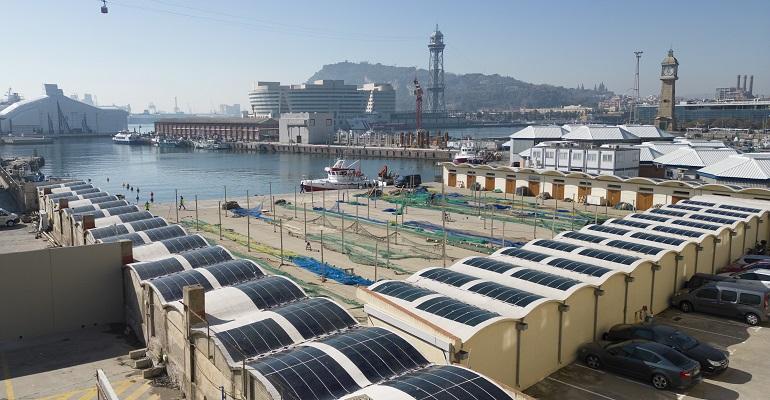Dock strikes, port congestion, Covid lockdowns, labour shortages, the impact of climate change – as 2022 drew to a close, Eleanor Hadland, Drewry’s senior analyst for ports and terminals, noted that shippers’ planning was now based on a disrupted supply chain as part of the reality of doing business.
Europe’s ports have been through their fair share of trauma during and post-pandemic. Now they face both ongoing and new challenges, not least as the ports and shipping world pushes for decarbonisation, copes with the impact of the war in Ukraine, and rebalances operations to meet the dramatic growth in e-commerce.
Santiago Garcia Milà, sub-director general at the Port of Barcelona, said: “The logistics chain is not feeling very well. Supply and demand are not fitting as they were ten years ago. We will need to find new solutions for that. But in disruptions you can find opportunities.”
Covid-19 accelerated some of the trends the port was already watching, he said, noting the increase in e-commerce and the fact that many companies have been reassessing their production and warehousing models – having discovered the vulnerability of sourcing entirely in Asia whether because of random Covid shutdowns in Chinese factories and ports, or the blockage of the Suez Canal.
Barcelona handled a record 70.9m tonnes in 2022, representing a growth of 6.9%; all traffic segments saw positive results except for containers, where imports were down 29.5% (and exports grew by just 1%).
Garcia Milà insisted that the goal is to serve the economy and create value and prosperity rather than volume. “We don’t want to be the biggest port in Europe – that is not our goal. We are measuring how much-added value we create for the economy in a sustainable manner. That is why we spend a lot of money calculating economic impact, social impact and environmental impact.
“When I joined the port 24 years ago, I was shocked that ports were measuring by physical units only – you might move 100m tonnes, but tonnes of what? It doesn’t make any sense to put together building materials, stones, caviar and electronic equipment. How can you compare?”
The bulk of Barcelona’s cargo is high value, low volume and low weight, matching the surrounding industry and economy, he said: electronics equipment, pharmaceuticals, fashion, and footwear.
Rollercoaster ride
Jacob Minnhagen, senior business developer at Gothenburg Port Authority agreed that the effects related to the pandemic are still here: “You have these huge ups and downs that have affected the logistics set-up and supply chain for many companies for quite some time and I don’t think we have seen the end of this rollercoaster ride. You now have a situation where there are reduced volumes going to Europe. I think that when the demand increases again, and that could be at very short notice and quite significant, then of course we could be back on that rollercoaster again.”
Read the full article here online in the Seatrade Maritime Global Ports Report 2023
Copyright © 2024. All rights reserved. Seatrade, a trading name of Informa Markets (UK) Limited.
Add Seatrade Maritime News to your Google News feed.  |

